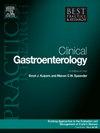Endoscopic Ultrasound armamentarium for precise and early diagnosis of biliopancreatic lesions
IF 3.2
3区 医学
Q2 GASTROENTEROLOGY & HEPATOLOGY
Best Practice & Research Clinical Gastroenterology
Pub Date : 2025-02-01
DOI:10.1016/j.bpg.2025.101987
引用次数: 0
Abstract
The diagnostic paradigm for biliopancreatic lesions has been revolutionized by continuous advancements in endoscopic ultrasound (EUS) technologies and techniques. This review examines the expanding diagnostic toolkit available to clinicians, emphasizing innovations that have significantly enhanced precision and early detection capabilities.
One of the most transformative advancements is the development of fine-needle biopsy (FNB) needles. Modern designs, including Franseen, and fork-tip configurations, have optimized tissue sampling, achieving diagnostic accuracies exceeding 90 % while minimizing the number of needle passes required. These innovations facilitate the acquisition of high-quality histological specimens suitable for comprehensive molecular profiling, paving the way for personalized therapeutic approaches.
Concurrent advancements in sampling techniques have bolstered these needle design improvements. The fanning technique has been particularly effective, increasing diagnostic yields from 71 % to 88 %. Wet suction methods preserve tissue integrity better than traditional approaches, while standardized protocols for needle passes enhance procedural efficiency. For specimen evaluation, Rapid On-Site Evaluation (ROSE) offers 93 % sensitivity, while alternatives like Macroscopic On-Site Evaluation (MOSE) provide comparable accuracy while reducing dependency on specialized personnel and resources.
Image enhancement technologies have markedly improved the ability to characterize lesions. Contrast Harmonic EUS (CH-EUS) is particularly effective in differentiating pancreatic cancer from other solid lesions, with meta-analyses confirming sensitivity and specificity of 94 % and 89 %, respectively. Its ability to detect lesions as small as 15 mm makes it invaluable for early diagnosis. In cystic lesions, CH-EUS excels in identifying malignant mural nodules, with diagnostic accuracies reaching 96 %.
The integration of elastography and advanced digital imaging technologies has further expanded diagnostic capabilities. Strain elastography provides qualitative insights into tissue characteristics, while shear wave elastography offers quantitative measurements of stiffness, adding diagnostic precision. Similarly, technologies like detective flow imaging match the accuracy of contrast-enhanced techniques in pancreatic cancer detection and enhance vascular assessment.
For cystic lesions, diagnostics have progressed beyond traditional fluid analysis. Techniques such as through-the-needle biopsy (TTNB) have improved diagnostic yields to 74 %, albeit with a modest risk of complications. Incorporating molecular markers and next-generation sequencing allows differentiation between cystic lesion subtypes and more accurate assessment of malignant potential.
This array of diagnostic tools offers unprecedented potential for early and precise diagnosis of biliopancreatic lesions. Integrating these innovations into clinical practice requires careful consideration of their strengths and limitations. Future research should aim to standardize protocols and establish evidence-based algorithms for their combined use, with the ultimate goal of improving patient outcomes through earlier detection and tailored management of biliopancreatic pathologies.
超声内镜对胆道病变的早期准确诊断
超声内镜(EUS)技术的不断进步使胆道胰腺病变的诊断范式发生了革命性的变化。本综述研究了临床医生可用的不断扩展的诊断工具包,强调了显著提高准确性和早期检测能力的创新。最具变革性的进步之一是细针活检针(FNB)的发展。现代设计,包括Franseen和叉尖配置,优化了组织采样,实现了超过90%的诊断准确性,同时最大限度地减少了所需的针头次数。这些创新有助于获得适合全面分子分析的高质量组织学标本,为个性化治疗方法铺平道路。同时,采样技术的进步也促进了针型设计的改进。扇风技术特别有效,将诊断率从71%提高到88%。湿吸法比传统方法更能保持组织的完整性,而针头通过的标准化方案提高了手术效率。对于标本评估,快速现场评估(ROSE)提供93%的灵敏度,而宏观现场评估(MOSE)等替代方案提供类似的准确性,同时减少对专业人员和资源的依赖。图像增强技术显著提高了表征病变的能力。对比谐波EUS (CH-EUS)在鉴别胰腺癌和其他实体病变方面特别有效,荟萃分析证实其敏感性和特异性分别为94%和89%。它能够检测到小到15毫米的病变,这对于早期诊断是非常宝贵的。在囊性病变中,超声造影在鉴别恶性壁结节方面表现突出,诊断准确率达96%。弹性成像和先进的数字成像技术的集成进一步扩展了诊断能力。应变弹性成像提供了对组织特性的定性分析,而剪切波弹性成像提供了刚度的定量测量,提高了诊断精度。类似地,检测血流成像等技术在胰腺癌检测中的准确性与对比增强技术相当,并增强了血管评估。对于囊性病变,诊断已经超越了传统的液体分析。针刺活检(TTNB)等技术将诊断率提高到74%,尽管并发症的风险不大。结合分子标记和下一代测序可以区分囊性病变亚型,更准确地评估恶性潜能。这一系列诊断工具为早期和精确诊断胆道胰腺病变提供了前所未有的潜力。将这些创新融入临床实践需要仔细考虑它们的优势和局限性。未来的研究应致力于标准化方案,并建立基于证据的算法,以便它们的联合使用,最终目标是通过早期发现和量身定制的胆道胰腺病理管理来改善患者的预后。
本文章由计算机程序翻译,如有差异,请以英文原文为准。
求助全文
约1分钟内获得全文
求助全文
来源期刊
CiteScore
5.50
自引率
0.00%
发文量
23
审稿时长
69 days
期刊介绍:
Each topic-based issue of Best Practice & Research Clinical Gastroenterology will provide a comprehensive review of current clinical practice and thinking within the specialty of gastroenterology.

 求助内容:
求助内容: 应助结果提醒方式:
应助结果提醒方式:


